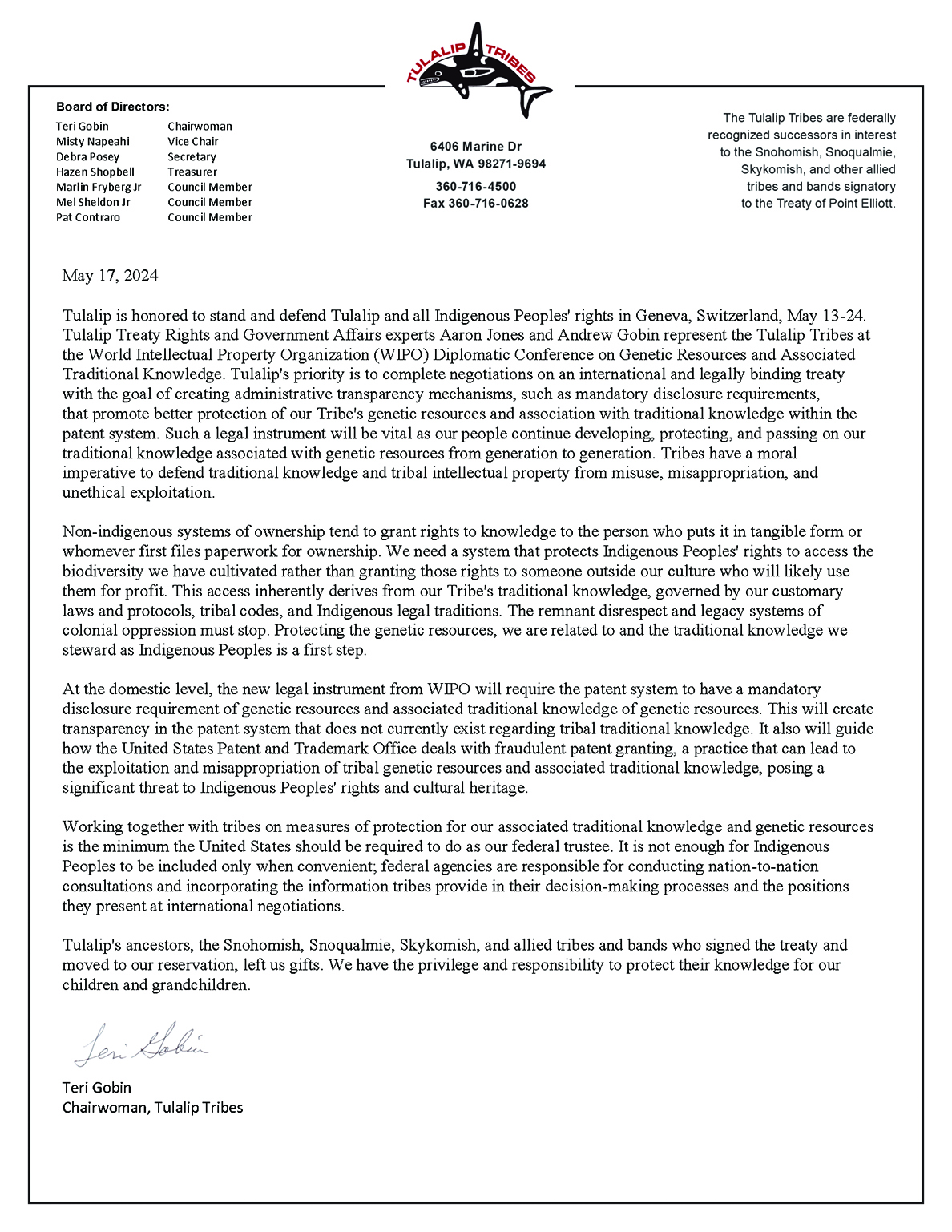Use the following link to download the May 25, 2024 issue of the syəcəb
Category: Tulalip News
Kudos to our Heritage art interns
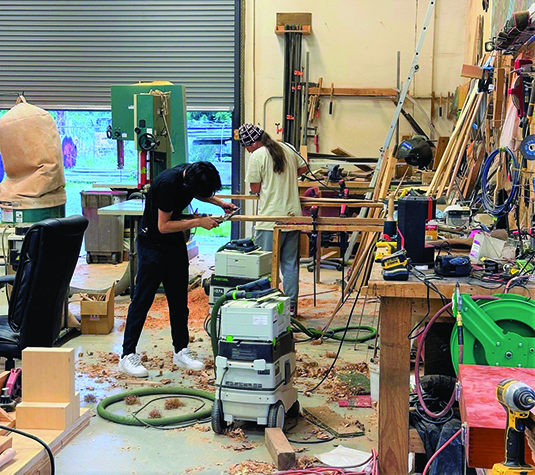
Submitted by Mytyl Hernandez and Ty Juvinel
“I wanted to share some information on the intern program that Ty has been coordinating at Tulalip Tribes design. He has had two tribal members, both interns from Heritage High School, for the majority of the year. They are finishing up their final week of internship and we thought it could make for a very good share. They have helped with all types of projects, including an order of 100 unsanded clapper kits for our events department and an additional 4 paddles that will all be gifted to students at their upcoming graduation.”
– Mytyl Hernandez, Hibulb Cultural Center manager
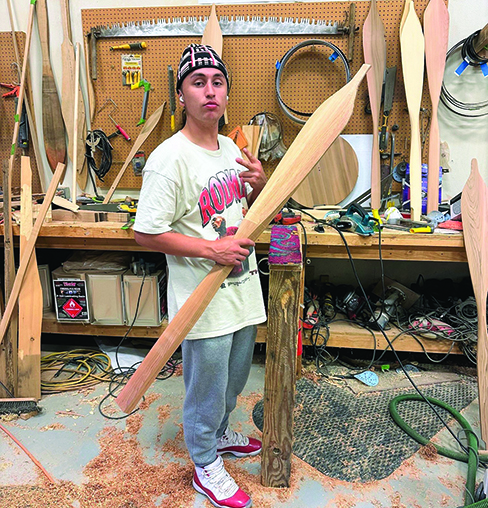
“These two young men have been doing some wonderful work, both of which are due to graduate. Adrian Jefferson and Taryn Fryberg have been really working their tails off through their own challenges, along with prepping for graduation. I’m just hoping we can inspire them to continue bettering themselves.
I’m proud of how driven this graduating class is. It takes a lot of strength and drive to talk about your passion and even more strength to follow your dreams. It always seems that once u speak on your goals people are quick to put you down, but these young men keep moving forward!”
– Ty Juvinel, creative arts & media specialist
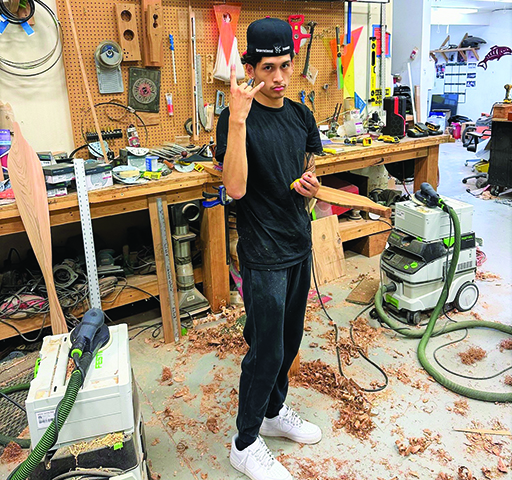
Regalia has evolved, just like us
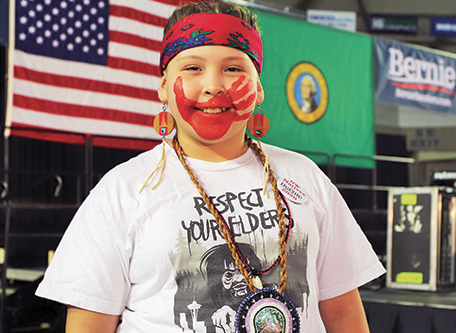
By Tulalip News intern and Heritage student Lilly Jefferson
My name is Lilly Jefferson, I am the syeceb intern. Unfortunately, the school year is almost over, which means my internship will soon end. So, let’s go out with a bang! Here is my final article for the 2023-2024 school year. To date, I have written about myself, the ‘Free Palestine’ movement, and connections between Tulalip and Hawaii. Now, I’d like to cover a heavier topic.
Over the last few weeks, there have been individuals and even some families in our Tulalip community that have been policing each other about where and when we can or can’t wear regalia. These cultural gatekeepers are forgetting that regalia can mean anything to any one of us.
There’s not one definition for what regalia means. It can mean whatever you want it to mean. It can look however you dream it to be. It can be however your spirit chooses to express itself. Regalia can be Salmon Ceremony style, smokehouse style, or powwow style. It can be a ribbon skirt and paddle vests. It can be cedar hats and cedar skirts, or wool skirts and wool vests. It can even be as simple as moccasins and a beaded medallion. Then there are all kinds of regalia that can be made from animal skins, furs, and feathers.
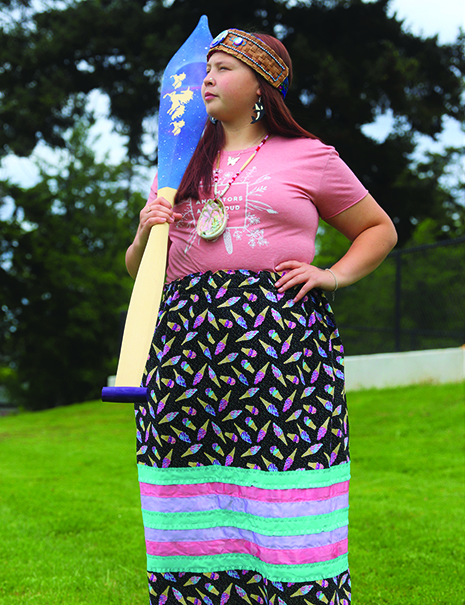
I think a lot of this recent conflict is because we are still in trauma from Tulalip Indian Boarding School. The reason I say this is because we are still fighting each other instead of helping each other. There’s still so much shame and hatred and blame being passed down through generations. Our people never came from that. Our people valued self-regulation, were loving, and caring, and were just for the people. All this other stuff came from the trauma directly rooted in the boarding schools.
Healing is important because when we sit in our bad feelings for too long it can start to take over our lives. It can turn into depression, bipolar-like behaviors, and addiction, and it can take us into a really bad place. Now, just because it can turn into that doesn’t mean we shouldn’t feel emotion. During boarding school times, the kids who would cry or show emotion got beat and thrown into jail. Our elders were those kids.
The definition of trauma is when we experience very stressful, frightening, or distressing events that are difficult to cope with or out of our control. Our elders were shown that emotion and being themselves wasn’t okay. They were not allowed to wear regalia, speak their language, nor practice their traditions. It was like everything they ever knew was not okay anymore, and they were alone in it too. They didn’t have their aunties or uncles or moms and dads there for them. They had to go through traumatic events on the daily all alone.
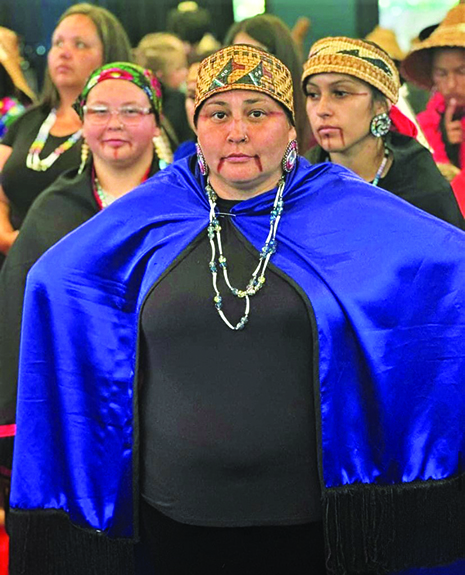
I come from a long history of powerful women. My mom is Shawnee Sheldon. My Aunties are Theresa Sheldon and Courtney Sheldon. My grandmother is Toni Sheldon, the first woman paddler on Tulalip’s canoe crew. They are very strong women and I am very fortunate to have had these supporters showing and teaching me what regalia means to me. They taught me not to be scared to wear my regalia. They showed me not to be scared to sing and dance and speak my language.
Every aspect of me is because of them. I wear my regalia to feel strength and protection, I wear it to show who I am and where I come from. I wear it as a representation. I wear it to express myself. I wear it to honor my family, spirit, and ancestors.
I’m just a 16-year-old who is passionate and has a voice that speaks loudly. If I said anything you didn’t like or agree with, then I hope you at least heard me because we all deserve to be seen, heard, loved and respected. I hope I inspire Native youth to have a voice and an opinion in more things related to this. I want to let you know that you are powerful and I hear you. Keep going and don’t be scared to learn new things, take healthy risks, and have fun.
But most importantly, always be proud of who you are and where you come from. Don’t be afraid to represent your family proudly. I’m not afraid to be myself and I never will be.
Honoring our Heroes
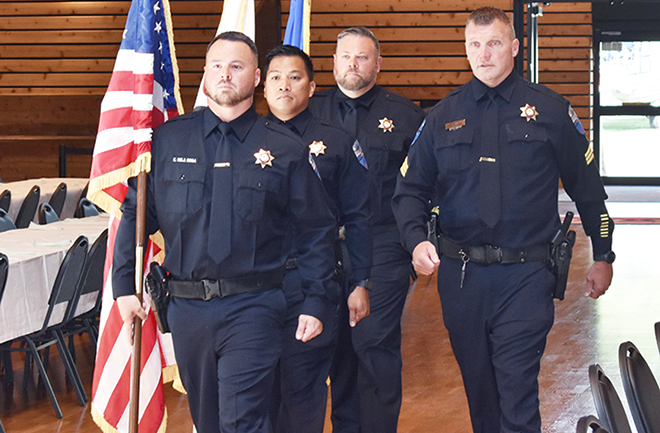
By Kalvin Valdillez, Tulalip News
In observation of National Police Week, the Tulalip Police Department hosted the second annual Peace Officers Memorial Day ceremony. The gathering brought together the families of TPD officers William Williams Sr. and Charlie Cortez, who both died in the line of duty while serving the Tulalip community.
The ceremony took place at the Gathering Hall on the afternoon of May 15, and though it was only one-hour long, the event provided a space for the families and community to heal while paying tribute to those two brave tribal members who paid the ultimate sacrifice while defending their treaty rights and homelands.
Said Tulalip Chief of Police, Chris Sutter, “At this ceremony, we honored William Williams Sr. who died in the line of duty on July 15, 1965. He was a fisheries patrol officer. We also honored officer Charlie Joe Cortez, who also was taken in the line of duty on November 17, 2020. It is really important that we, as a police department and a community, gather each Police Officer Memorial Day. Our two fallen officers represent the dedication and commitment to this profession, and their loyalty and their service to their community. And we plan to continue this tradition, to always remember their sacrifice in the line of service.”
Taken too soon, at the age of 29, TPD Fish and Wildlife Officer Charlie Cortez’s End of Watch date in November of 2020 came while on duty, after assisting a distressed boater in rough and stormy conditions. Charlie’s fisheries vessel capsized in the Salish Sea. After a two-day search and recovery mission, Officer Cortez was pronounced lost at sea and his body has yet to be recovered and returned home to his family.
On the Officer Down Memorial Page, a website dedicated to the memory of all of the fallen officers across the nation, Williams’ dedication states that he drowned while patrolling Quil Ceda Creek in July of 1965. He was reported missing after his boat was found unoccupied. His body was recovered along the creek in the days following, just west of the I-5 overpass in Marysville.
Young drummers and dancers from Quil Ceda Elementary attended the Peace Officers Memorial Day gathering to offer medicine through song and dance. In addition to the traditional songs by the young culture bearers, there were live performances of the National Anthem and a bagpipe rendition of Amazing Grace. There was also a streamer ceremony held for Officer Williams.
A special moment took place for Dominic and Peyton Cortez during the ceremony. A couple of years ago, a non-profit motorcycle run called Beyond the Call of Duty, paid tribute to Charlie by customizing a bike in his honor and sharing his story while riding all throughout the country. Allison McCarter, who rode Charlie’s motorcycle during the run, attended this year’s ceremony to present a shroud to Charlie’s children.
Several guest speakers, including TPD’s own Angela Davis and Chris Gobin, as well as a handful of Tulalip BOD members, shared words to uplift the families, while taking time to reflect on the lives of Officer Williams and Officer Cortez. Both of the families found comfort in the showing of support from the community.
“For me, it’s heartwarming. It touches my heart to see people take time out of their day to show their respects and let us know they care,” expressed Charlie’s mom, Paula Cortez. “I think it’s important for the community to take some time to pause and recognize our fallen officers. When the department puts on events for the families, it’s important for the survivors to see that recognition. It provides healing, and it feels good to stand together in unity with the other family as well.”
As Chief Sutter mentioned, the Tulalip Police Department plans to hold the Honoring Our Heroes event every year on Peace Officers Memorial Day to bring healing to the community and recognize fallen officers who died in the line of duty while protecting Tulalip.
“We had a really lovely experience at the Gathering Hall,” said Chief Sutter. “As a police department, we’re striving to give exceptional police services to our community. I have high confidence in the men and women of the Tulalip tribal police department, and I really stress the importance of our core operating value – that as we go out to serve, that we’re peacemakers and problem solvers, and that we’re going the extra mile to help our Tulalip tribal members. And oftentimes our interactions are not criminal in nature, it’s more helping people and finding resources for people. I’m just very proud of the great work that we do.”
__________________________________________
Family of Officer Cortez unveils headstone memorial
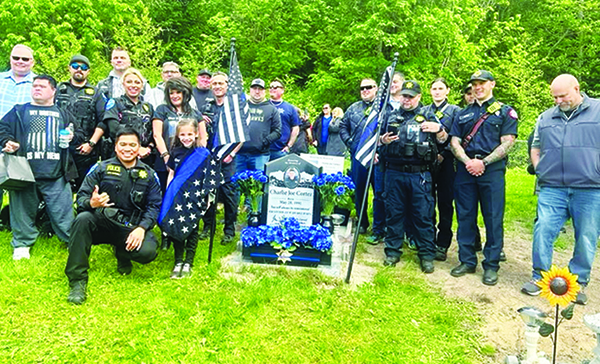
This coming November will mark the fourth year since Tulalip tribal member and Fish and Wildlife Officer, Charlie Cortez, was pronounced lost at sea. And ever since that stormy night when Charlie’s vessel was capsized, his presence has been greatly missed by his loved ones, his fellow TPD officers, and the community who watched him grow up on the reservation and on the local motorcross circuit.
Through the initial period of shock and grief, the Cortez family found comfort in the support from both the Tulalip and law enforcement community, who ensured that Charlie’s memory will live on through the passage of time. Charlie’s name can be found etched on memorial walls in Olympia, Spokane, and Washington D.C. And the Tribe also dedicated the new Marina building in his honor.
This past weekend, on May 18, Charlie’s loved ones, Tulalip board members, and several TPD officers, gathered at the Mission Beach Cemetery as the family unveiled a beautiful memorial headstone for Officer Cortez.
Prior to the unveiling, Paula got the first glimpse of the memorial stone, and she admitted that she was initially upset because the headstone was facing the wrong direction. However, she decided to leave it as is after her mom pointed out that Charlie’s photo is facing Salish Sea and that ‘he’s keeping an eye out on the water to make sure everybody stays safe’.
The headstone shares the message, ‘you will always be remembered’ as well as his End of Watch date, November 17, 2020. The memorial also features an image of an elk, as Charlie enjoyed exercising his treaty rights and hunting with his dad. The unveiling included a blessing from tribal drummers, as well as some encouraging words from Tulalip BOD members and TPD officers.
Said Paula, “I just want to thank everybody who has been there to support us all along the way. It really touched my heart this last weekend to see those who came forward to support us. I felt like placing the stone at the cemetery would provide the kids a more private place for them to visit. It gives them the opportunity to be alone with him and place a little trinket on his stone. I just felt we needed a place for the family, and any of his friends or the community, and I wanted it to be placed by our family.”
Tulalip hero, Charlie Cortez, continues to live on in spirit – in the hearts of his loved ones and in the memories of his fellow brothers and sisters in blue. As mentioned before, in addition to the new memorial stone, Charlie’s name is forever displayed on memorial walls throughout the entire nation. And therefore, his legacy and story of valor will be shared for generations into the future, from Tulalip all the way to Washington D.C.
Commemorating healing and resiliency in a redwood
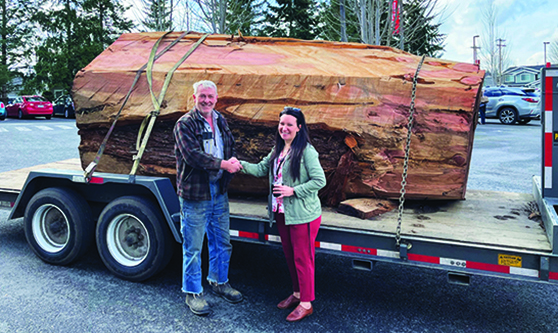
By Micheal Rios, Tulalip News
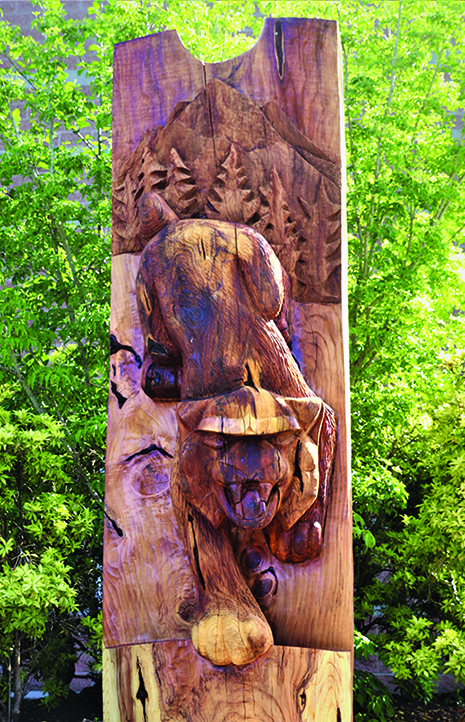
For one year, a master carver and his pride of wildcats sawed, whittled, and chipped away at a 4,000-pound redwood log. Their combined force of will and strenuous efforts are permanently affixed on the Arch Bishop Murphy High School campus, residing in the spirit of a fully-grown wildcat emerging from a mountainous forest.
This stunning symbology is what brought so many people together on May 15 as the entire student body, school staff, local school district officials, and representatives from the Tulalip Tribes gathered within Terry Ennis Stadium to commemorate the official debut of a one-of-a-kind healing pole.
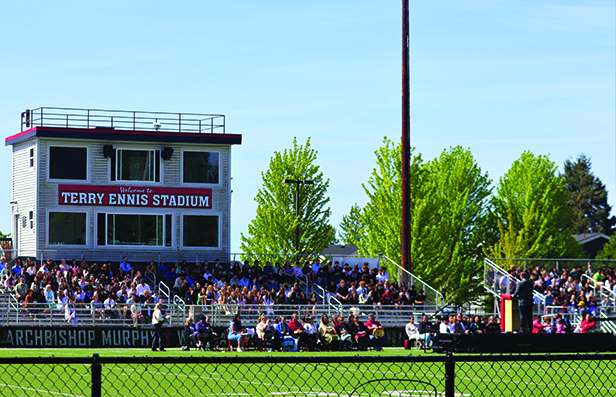
“A little over a year ago, we began carving the healing pole in the spring of 2023. Most of the hands here in the audience today – our students and staff – helped carve this beautiful pole – complete with student signatures across the back,” explained Principal Alicia Mitchell. “We are so grateful to Mr. James Madison for serving as our first ever artist-in-residence. The goal of this project was to provide a source of healing, while rebuilding and strengthening our community from all of the disruption caused to schools throughout the COVID-19 pandemic.
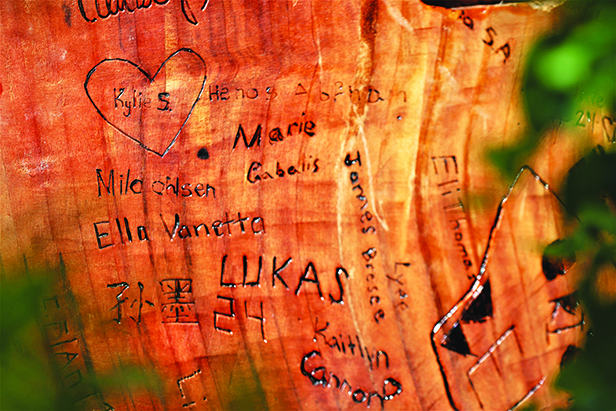
“At the same time, students had a unique opportunity to learn about Coast Salish art and Tulalip culture. This project has complemented our faculty professional development, which has included visits to the Tulalip Hibulb Cultural Center and hosting Dr. Stephanie Fryberg on our campus. As a result of this learning, our U.S. History classes now make trips to the Hibulb Cultural Center, our English classes have sought to include even more Native American voices in their readings, and our Science and Social Studies Department chairs have personally met with the education coordinator for the Tulalip Tribes Natural Resources Department in the hopes of extending the learning beyond our classrooms.”
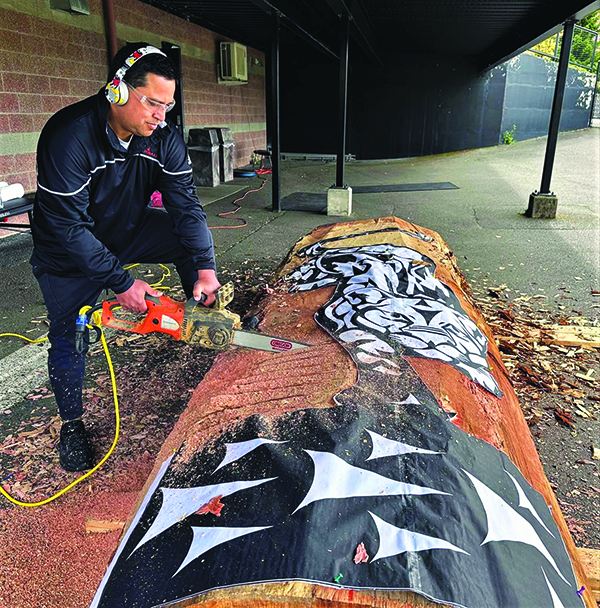
Tulalip artist and master woodcarver James Madison recently received the Richard and Nancy Wendt Award of Excellence, an award given annually to a person or organization that has demonstrated outstanding support of the arts throughout their lifetime. Deepening his connection with the arts regionally, he embarked on this healing pole journey with both his sons and their fellow Arch Bishop classmates.
One of those classmates is Amaya Hernandez. She was one of the commemoration’s student speakers. “I’m so grateful to have the healing pole on our campus. I’m happy to have representation of my culture here at AMHS. Being one out of 15 Native American students here, it makes me proud that we have made such a big impact to campus. I can’t wait for our community to grow even more here. t’ígʷicid huy, thank you and goodbye,” said the 16-year-old Tulalip tribal member.
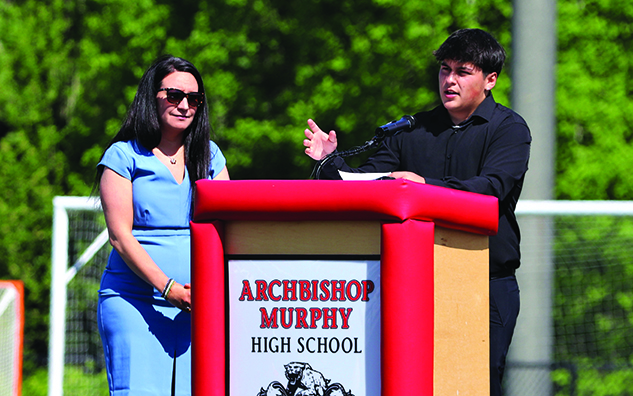
“Being able to help my dad create this pole and seeing everyone come together today to celebrate it really means a lot,” added Jevin Madison. “My dad allowed all of Arch Bishop students who were interested and willing to work on the pole with us. Through the process of making it over all these months, I think it helped students who didn’t really understand our Tulalip culture or what we’re about to find some understanding.
“I witnessed some students open up and ask questions, others who were really excited to help on certain parts of the pole, and then so many who were eager to carve their name in the back of it,” continued the 17-year-old Tulalip tribal member. “I think that just shows the level of respect for Tulalip culture grew as the pole was made because they were able to help work on it and ask questions. With there only being about 15 Native American students here, I think this process helped us come together and form a larger community here at school…that’s healing.”
Heritage Hawks golf team shines at Tri-Districts
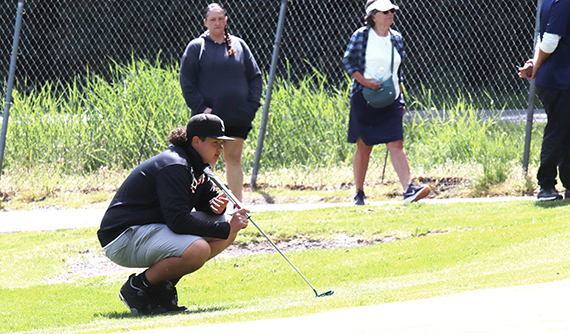
By Wade Sheldon, Tulalip News
On Wednesday, May 14, the Tulalip Heritage High School golf team hosted the 2b/1b Tri-District Golf Tournament for the first time at Tulalip’s Battle Creek Golf Course. The weather was perfect as 62 girls and boys, including Tulalip Heritage seniors Tieriana Mclean and Lincoln Pablo, competed, aiming to qualify for the highly anticipated WIAA State Tournament.
To qualify for the 18-hole match, boys needed to shoot under 55 and girls under 65 on the first nine holes. This target posed no problem for Pablo as he managed to stay in the top 3 at the turn. Although he lost a few strokes on hole ten, Pablo maintained his composure, rallied back, and finished the match with a score of 89. With this score, Pablo would finish tenth out of 34, making the 17-spot cut-off and stamping his ticket to the state tournament.
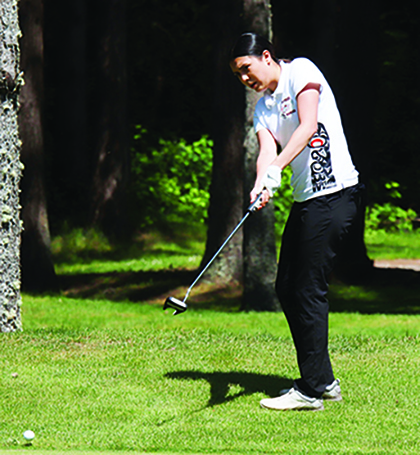
“Last year, I made tri-districts, but it didn’t go well,” Pablo said. “This year, I worked hard to improve. On hole 5, I hit a great approach shot from the tee box and put the ball within 120 yards of the green. Then I took my nine-iron and hit the ball about 8 yards from the pin, finishing the hole with a par. This tournament has been amazing; the growth I have seen in myself over the last couple of years has been incredible. My family here supporting me has been wonderful.”
With some fantastic shots, Mclean kept it close to the players on the leaderboard. One such shot was on hole number 6, where Mclean sank a ten-foot-plus shot to save a bogey. With a par on hole 9, Mclean would end the front nine with a 54, battling for a tournament spot on the back nine. After a rough start and putting up a 13 on hole 13, Mclean dug deep, strung together a few suitable holes, and shot a 112, putting herself in 12th place out of 28 contestants, placing in the top 14 ultimately qualifying for the state tournament.
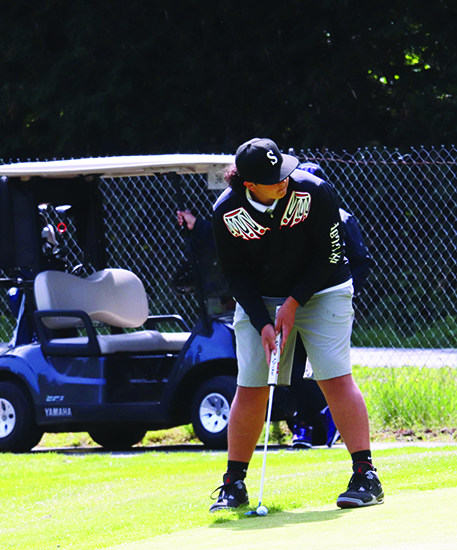
Coaches J.T. and Dinesha Kane closely followed the players. Playing on Tulalip’s home turf was a bonus.
J.T. said, “It was a big doing bringing the tournament to Tulalip. We wanted to be the hub for the tournament because we wanted the teams from down south and up north to meet us on our tribe and represent our inaugural season. We’ve worked hard; our kids are ready to show that we are a golf high school and community.”
When asked what he was most proud of, J.T. remarked, “Mindset; if I had one word, it would be mindset. Their ability to overcome the course’s multiple obstacles was remarkable and I can’t wait to see what they have at state.”
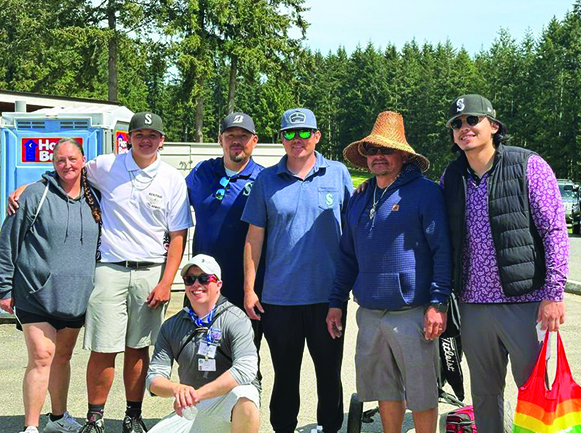
The match at Battle Creek Golf Course showcased the talent and determination of the Tulalip Heritage golf team. The team’s ability to host and compete at such a high level marks a significant achievement for Heritage and sets a new standard for the school’s golf program, ensuring that the team will be formidable in future tournaments.
Tulalip Tribes Treaty Rights Letter
May 18, 2024 syəcəb
Use the following link to download the May 18, 2024 issue of the syəcəb
It’s For the Kids! Annual auction raises nearly $600,000 for Tulalip Boys & Girls Club
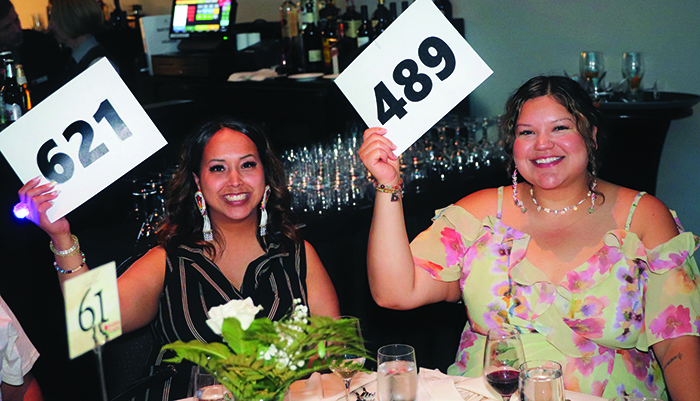
By Micheal Rios, Tulalip News
A short-lived heat wave hit Snohomish County last weekend. Temperatures touched 80° on Saturday, May 11, resulting in many people either staying inside to avoid the sun rays or actively searching for a fun Spring-time experience. Some six-hundred Snohomish County residents weren’t burdened by such trivial things because fortunately they had already RSVP’d to the always exciting and memorable, not to mentioned well air-conditioned, 26th Annual Boys & Girls Club Auction.
Hosted within the Tulalip Resort Casino’s Orca Ballroom, the signature fundraising event of the season was all about giving gracious donors and committed community members an opportunity to paint a brighter future for Tulalip’s children.
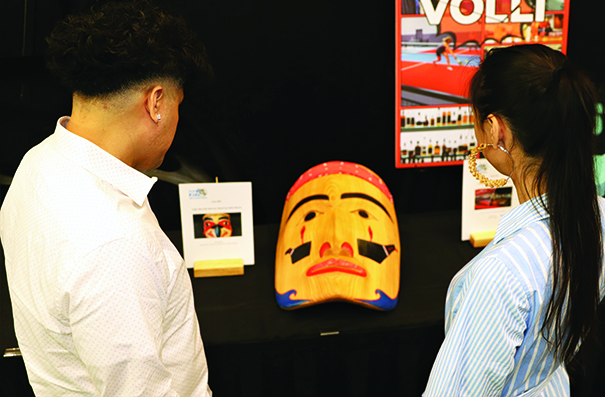
“Many of us have spent unlimited hours at our local Boys & Girls Club participating in sports and learning activities while others remember our local club as a safe place to be surrounded by friends and staff members we trusted,” stated auction chairwoman Marci Fryberg. Marci also serves her Tribe as President of Tulalip Gaming Operation. “Our personal experiences have led to a life-long commitment to an organization that had a positive influence in our lives growing up, and now it is our responsibility to carry that commitment forward.
“Our theme, Woven through Generations, highlights Tulalip’s commitment to family and how our communities work collectively to safeguard the future of the next seven generations. We are honored to celebrate 26 years of fulfilling our mission of promoting health, social, and educational development of our kids. Our club cares for hundreds of kids daily. Magic happens here, as our kids strive to achieve higher levels of learning and personal growth while creating special friendships and bonds that last a lifetime.”
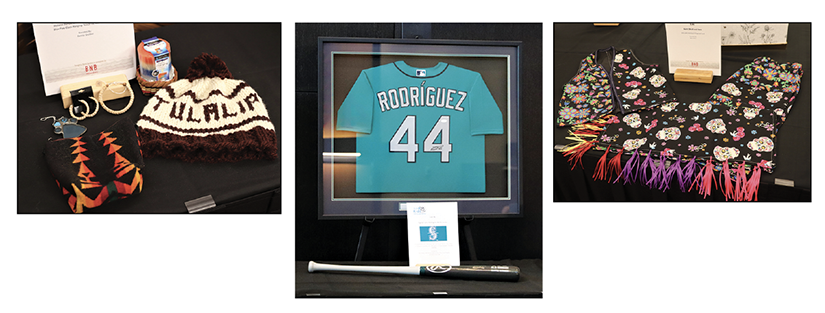
‘The Club’, as it’s affectionately been dubbed by two generations worth of Tulalip youth who attend daily, is a safe place where kids can just be kids. While there, they are routinely exposed to nutrient-dense, healthy food choices, learn useful skills that can be put to work at home or in the classroom, and create an abundance of happy memories that can be remembered later in life.
An example of sovereignty in action, the Club is the first-of-its-kind to be built on tribal land in Washington State. Established over twenty-five years ago, 2024 marks nearly three decades worth of commitment to the community. Through before and after school programs, our reservation’s club aims to help the next generation improve their lives by building a positive self-esteem, developing core values, and adapting critical skills during their foundational periods of growth.
“What an amazing evening to be together with all of you for our signature event that supports the Tulalip Boys and Girls Club,” said Tulalip Chairwoman Teri Gobin to the hundreds in attendance. “The funds raised from this one event truly makes a huge impact on the lives of so many of our kids. We have so many leaders who grew up as club kids and now are professionals working in management positions at both our casinos, Quil Ceda Village, and in many departments of our tribal government. That’s a significant impact the Boys & Girls Club has had on our people.”

Serving as a model for those working to improve the lives of young people in Tulalip and the surrounding communities, our Club is the primary beneficiary of the annual spring time auction. With each auction building off the success of the previous years, the Club has not only been able to sustain services, but also develop and complete much needed campus expansions that add additional learning and activity space.
Funds raised from the annual actions are dedicated for capital improvement, not operating costs. Previous auction funds have paid for a state-of-the-art music studio, a multi-media room with twenty-plus computers, several transportation vehicles, roof repairs, and even a 4,000-square-foot technology-filled extension to better accommodate an ever-growing teenager membership. This teen center has been invaluable since its creation. In uncertain times, local teenagers are able to depend on access to this tech-loaded space to meet their computer-driven demands as 21st century students.
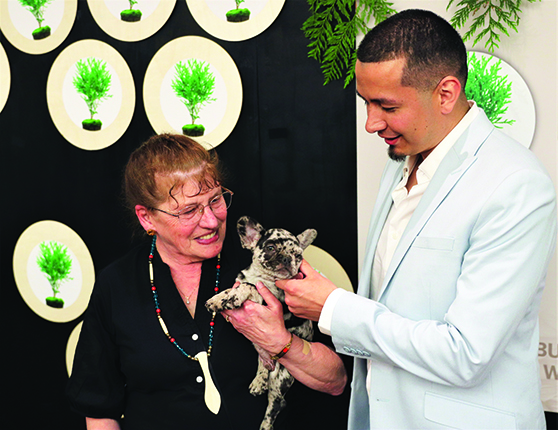
“It’s so funny looking back because I didn’t realize how much the Club meant to me as a kid, but really it was everything,” shared Club Director, Shawn Sanchey. The 28-year-old homegrown Tulalip citizen has come full circle after he himself grew up a Club kid. Now, he manages the same facility so many kids depend on every day. “It’s amazing being able to witness these kids learn and grow in the same way staff once did for me. It really is unique how dedicated our staff are to the community’s youth.”
Embodying his staff’s unique dedication to the community is the legendary Diane Prouty. She’s been safeguarding Tulalip’s club kids for 24 and a half years. She learns every single kid’s name who is a club regular and takes to heart their emotional and physical well-being as if they were her own grandkids. It’s no wonder then that she’s been lovingly referred to as Grandma Diane by thousands of kids at this point. A title she proudly owns.
“All nine of my actual grandkids attended the club, and when they were here they’d of course call me grandma so eventually the other kids did, too. I thought it was just the cutest thing. I had no idea twenty-four years later that would become my de facto name, but I love it because it’s the kids who gave it to me,” explained Diane as she assisted checking in auction guests. “Every year, at this auction, I see former club kids all grown up, who have started families of their own and have kids who attend the club today. Ross and Krisan Fryberg were both club kids. Now, they are married and have had multiple kids attend the club, just like they once did.”
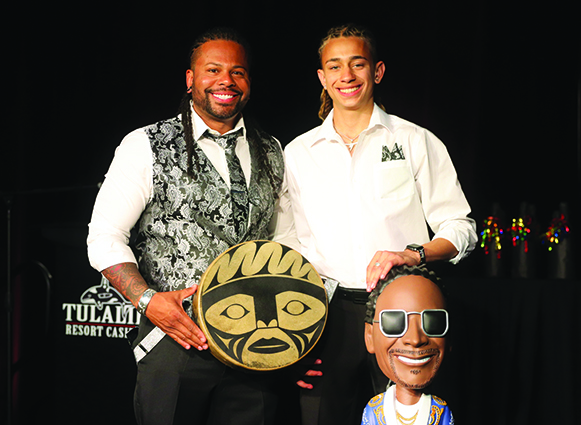
Ross Fryberg Sr. donated a beautiful, handcrafted drum to the live auction. It was brought to center stage by his son, Ross Jr., where it fetched a handsome sum to support a facility both Sr. and Jr. have cultivated many memories.
In total, there were an estimated 600 generous individuals in attendance for this year’s 26th annual auction. Most of these attendees have never been inside Tulalip’s reservation-based B&GC Club. However, the uplifting faces of Club kids were ever-present on marketing materials and projected onto several giant screens bordering the Orca Ballroom. There were also a number of teenagers who volunteered during the auction to help generate support by sharing their wonderful presence and beaming smiles.
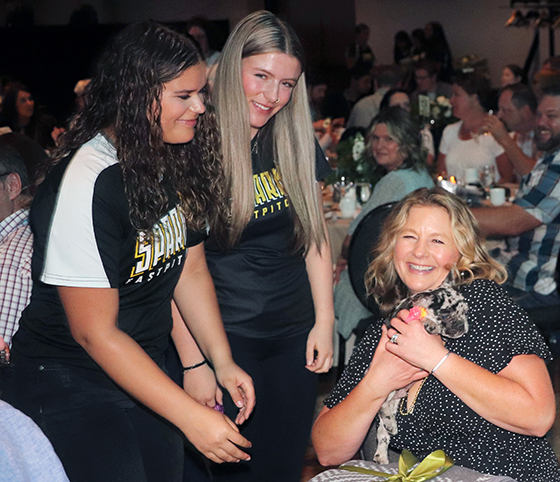
One such teenager was 16-year-old Amaya Hernandez who, during the live auction, was one of the lucky few to roam the ballroom while holding a very special item – a French Bulldog puppy – that generated all kinds of buzz. When auctioneer Mark Schenfeld announced it was bidding time for the adorable pup, amass of bidding cards immediately filled the air. The eventual winner received the French Bulldog hand delivered by Amaya and her Snohomish Spark teammate, Ella Roller.
When the 26th annual action finally came to an end, close to $600,000 was raised between the silent and live auction proceedings. Notably, a generous $25,000 of that impressive sum was raised by U.S. Bank’s Smokey Point branch. The bank staff embraced the celebratory atmosphere and combined their powers to claim top spot in the event concluding dessert dash.

“At the end of the day, this auction is really about building relationships with the community and continuing to build upon the strong foundation of support we have with the Tulalip Tribes, Snohomish County, and the Tulalip Resort Casino,” said Terry Freeman, special event specialist for the Boys & Girls Clubs of Snohomish County. “For twenty plus years now, our goal has remained the same – to create more and more partnerships off the reservation to achieve our goals on reservation. Thanks to our Tulalip leadership team and the leadership teams of so many amazing businesses in Snohomish County, we continue to meet and exceed this goal.”
Thanks to everyone who contributed and gave generously, the 26th annual action was a major success. The generosity and heartfelt support received each year from sponsors and volunteers is overwhelming. As in years past, all funds raised will ensure our local Boys & Girls Club continues to provide quality, growth-focused programs in a fun, safe and positive environment for kids.
Can You Dig It? Tulalip Natural Resources helps community grow together with a garden workshop
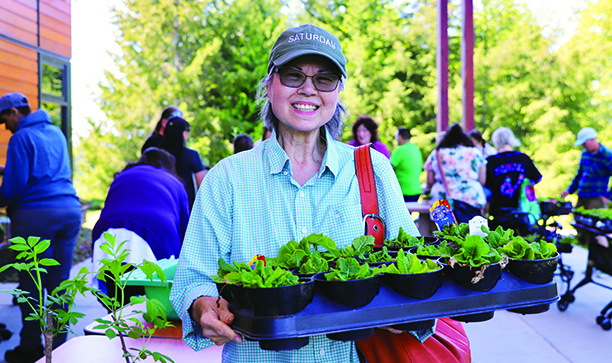
By Kalvin Valdillez, Tulalip News
In the heart of the spring season, the Tulalip Tribes Natural Resources department put together a successful event dedicated to a popular springtime hobby, though many would argue that gardening is a way of life, in both the literal and figurative sense.
Natural Resources opened the garden workshop to include all residents of Tulalip. On the morning of May 11, close to 60 community members showed up at the Tulalip Admin Building to really dig into the art of gardening and learn about the many benefits that plants have to offer, while cultivating new skills and knowledge along the way.
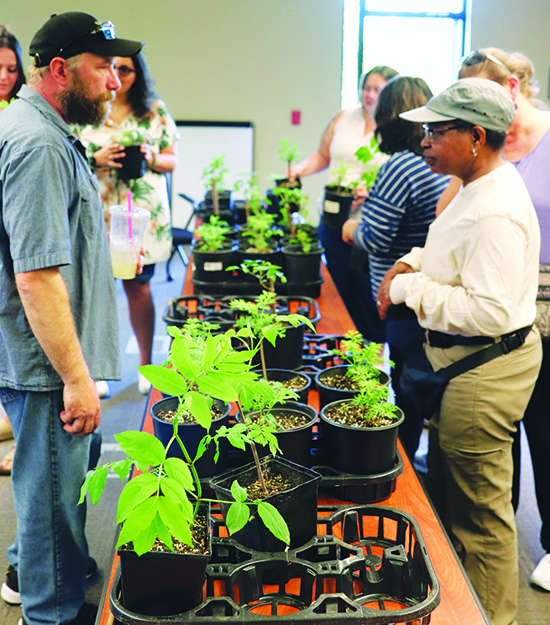
“I have always loved gardening and working in the yard. To me, it’s relaxing. Even pulling weeds, I just really enjoy it,” shared community member and home gardener, Catherine Key. “I decided to come when I saw the flyer and all the subjects looked interesting. I just think it’s really cool that the Tribe did this.”
The garden workshop featured three presentations that focused on several aspects of gardening. Valerie Streeter, Tulalip Natural Resources Stormwater planner, opened the three-hour event with a presentation titled, Go with the Flow, that informed the people about watersheds, rainwater collection, and natural yard care. Local Horticultural Inspirer, Seth Smith, led an informational presentation dedicated to growing a garden for sustenance, which included a Q&A where people absorbed any and all insight that Seth had to share.
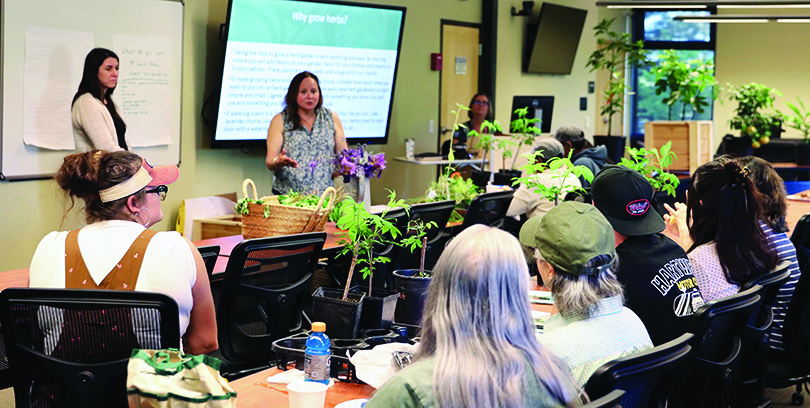
Said Seth, “Today I talked about subtropical plants, citruses, fig trees, pomegranates, any unique plant that’s not apple trees or pear trees that we’re all familiar with. I wanted people to think outside the box, open their mind and inspiration to achieve things that people would rather you not succeed at. [Gardening] allows you to free your mind of negativity on the day to day. It allows you to have your own space, and I think that’ll allow you to clear your mind of work, family drama, vehicle issues, and allow you to just focus on yourself.”
The Tulalip Health Clinic Diabetes Program presented a detailed lesson on the medicinal usages of plants, while also touching on the native plants of this region, essential gardening tools, and the special connection to the natural world that we experience as Indigenous people
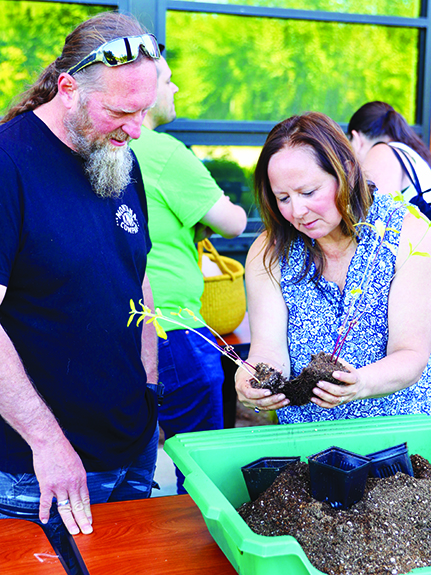
Tulalip Diabetes Educator, Veronica ‘Roni’ Leahy explained, “Plants were here before people, we think of them as our first teachers. The more you’re around them, the more you feel connected. Think of them as friends that you get to see once a year. Enjoy your time with them, go and be out with nature. I brought two plants that are representing us today; Camus is a native plant and you’re on tribal lands. Sacred plant, sacred land. And iris, which we planted at the Tulalip Health Clinic, it represents the community, this group of people who were able to come out and learn today.”
Along with Roni was Herbalist, Leslie Lekos, who explained the step-by-step process of creating tinctures from plant extracts, that could be used as home remedies to help treat a variety of ailments such as nausea and muscle soreness. Leslie has numerous tinctures and sprays for sale in her Etsy store, Wild Root Botanicals. She also teaches hands-on classes throughout the year including Foundations of Herbalism and Wild Foods: Resiliency Through Connection, more details can be found on her website. Following the presentation, both Roni and Leslie held live demonstrations on transplanting and creating tinctures.
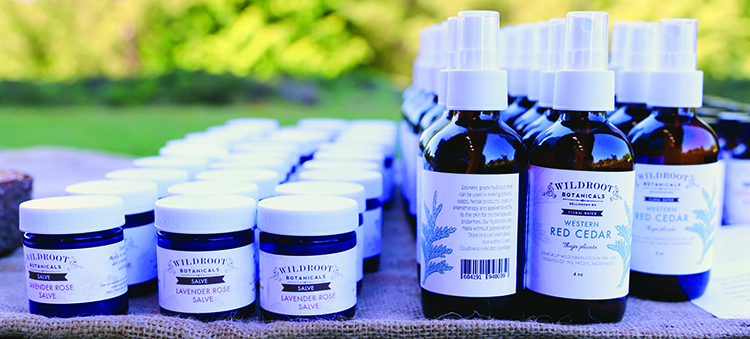
The event ended with a raffle drawing and a plant giveaway, in which people received primroses, elderberries, planter boxes, and compost.
“The turnout was great. It did turn out really cool today,” exclaimed Melissa Gobin, Tulalip Natural Resources Environmental and Education Coordinator. “At the Earth Day planning meetings, that started in January, a lot of people were talking about sustainability for food and growing our own foods, along with rain gardens. Val (Streeter) has a grant through the EPA, and she has money to put on workshops to talk about rain gardens. I met with Seth and he’s a garden guru, and also with Roni because she’s amazing with gardens and we’ve been learning so much from her, and Leslie too. So, we just wanted to get all these people together to inform the community and give them some inspiration to get out and garden.”
She continued, “On May 22, we’re going to be at Quil Ceda Elementary and we’re going to have Farmer Frog there to help us put plants in the ground. It’s going to be a Plant 101 course on how to put them in, the dos and don’ts, and we’ll be going over a lot of the basics because it’s Family Day at the elementary. And hopefully in the future we’ll have more of these classes. I also want to start a gardening group, something where people can get together to plant, seed exchange. Earth Day is every day and we’re going to have a bunch of stuff going on now. I’m just so glad there were so many people that came out and enjoyed it and seemed so engaged.”
Equipped with invaluable gardening game, new plants, and tools, the people were eager to get back home to enjoy the sunny weather and get lost in their personal gardens.
Following the garden workshop, community member, Tracy Owens, shared, “I got the flyer in the mail and I’m really into gardening. I wanted to see if I was going to learn something new and share different ideas. Ever since we bought our property here on Tulalip, we’ve expanded something new every year to our garden. We have herbs, we have vegetables, we have flowers. I just love it. Today I enjoyed learning about different plants and just listening to people talk about gardening and seeing their love that they have for plants too. You can see that plants make people happy.”
